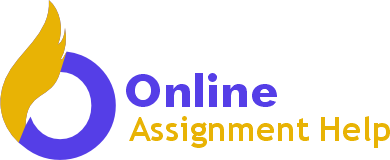Table of Contents
5HR02 Talent Management and Workforce Planning Questions
- New entrants to the parcel delivery market and other labour market competitors have adversely affected ParcelCare’s ability to compete in labour markets. Explain how ParcelCare can strategically position themselves in competitive labour markets. (AC 1.1)
- Explain the impact of changing labour market conditions on resourcing decisions at ParcelCare. (AC 1.2)
- You are aware that workforce planning has not been carried out in the past and decide to persuade the senior leadership team that this activity is worth doing. Analyse the impact of effective workforce planning, making clear how ParcelCare could benefit from this
activity. (AC 2.1) - To strengthen your argument to introduce workforce planning, evaluate techniques that can be used to support the process of workforce planning. (AC 2.2)
- Currently, vacancies are advertised on ParcelCare’s website. Line managers then interview shortlisted applicants. You feel that these are suitable recruitment and selection methods to use but want to broaden the methods used. Evaluate the strengths and weaknesses of
two different recruitment methods and two different selection methods. (AC 2.3) - On examining employee turnover rates, you feel the rate is higher than it should be, and higher than internal targets. To try to understand this further, discuss differences between avoidable and unavoidable turnover and differences between push and pull factors. (AC 3.1)
- Retention of warehouse staff is an issue, as there are many labour market competitors. Compare the following retention approaches: realistic job previews; induction; job enrichment; and reward. (AC 3.2)
- To influence the senior leadership team to accept that employee turnover should be addressed, explain the impact of dysfunctional employee turnover. (AC 3.3)
- ParcelCare employs the majority of employees on permanent, full-time contracts. You feel these contracts have their place, but it is time to consider whether other types of contractual arrangements could be beneficial to the organisation, especially when demand for delivery services increases and decreases. Assess the suitability of permanent, full-time contracts for delivery drivers as well as two other types of contracts. (AC 4.1)
- At present, an ad hoc approach is taken to onboarding and typically involves the line manager ensuring new starter forms are completed and health and safety training provided. You identify that onboarding can be improved but first need to convince others that investment in this area is worthwhile. Explain the benefits of effective onboarding. (AC 4.2)
5HR02 Assignment Answers
New entrants to the parcel delivery market and other labour market competitors have adversely affected ParcelCare’s ability to compete in labour markets. Explain how ParcelCare can strategically position themselves in competitive labour markets. (AC 1.1)
ParcelCare is facing significant challenges in competing for talent due to new entrants and established players in the industry. To enhance its reputation in the industry and attract quality employees, it needs to develop its brand in the labor market, offer competitive compensation and benefits, enhance recruitment and marketing, adopt modern recruitment strategies, foster an inclusive workplace, and invest in employee engagement and retention programs.
There is a need for the company to boost its reputation in the labor market. To achieve that goal, the company can promote a positive work environment and invest in employee wellbeing. Another strategy is offering new employees chances for career progression and development through skill development and training and development (Waheed & Zaim, 2015). In this manner, employees will acquire additional skills which will enhance their careers and get promotion. Secondly, there is also a need for the company to offer competitive compensation. Given that the labor market is tough, ParcelCare has no choice but offering good pay to employees with the right skills. In addition, it could offer benefits such as flexible work options, health and wellness programs, and incentive schemes.
For ParcelCare to position itself strategically in the labor market, it needs to enhance its current recruitment and marketing by adopting a social media approach (Martin, 2015). The younger people whom that company might want to attract are heavy users of social media. Therefore, it makes sense for the company to use social media platforms to engage potential employees, share authentic stories from current employees, and use them to post relevant content that could capture the attention of a targeted group of people.
There is also a chance for the company to improve outcomes in the labor market by adopting the latest technologies in recruitment. For instance, using AI or machine learning, it can potentially go through all the applications and identify employees with the potential or a good fit for the company. Using the technology, they can identify good applicants from a huge set of applications (Waheed & Zaim, 2015). There are other modern technologies, such as applicant tracking systems, which make the process of recruitment easier and streamlines. ParcelCare should invest in the right technologies to stand a chance in the highly competitive labor market.
The other approach is fostering an inclusive workplace via programs such as diversity initiatives. The company needs to invest time and effort in creating a diverse and inclusive workplace to stand a chance of attracting candidates from minorities. Such efforts demonstrate its commitment to equality, fairness, and support for minority or underrepresented groups. Moreover, there is also a need to take proactive steps to support engagement and investing in retention programs.
Explain the impact of changing labour market conditions on resourcing decisions at ParcelCare. (AC 1.2)
Currently, the dynamics of the labor market suggest that there is stiff competition for talent. The main drivers of this trend are unemployment trends, economic cycles, and competitor activity. In a market where the rate of unemployment is low, the competition for talent is high and the same applies when competitor activity in relation to demand for labor is high. All these dynamics have an implication for the resourcing decisions in the company.
One impact of changing labor market conditions on resourcing decisions is reevaluation of the compensation. The stiff competition for qualified candidates means that the company must change its compensation to stay competitive. Adjustment must be made in relation to pay and benefits for the company to remain competitive (Martin, 2015). Another impact is to diversify recruitment channels by including online platforms, using referrals, and partnering with educational institutions. Those additional channels provide the company with more ways to connect with potential employees.
Another resourcing decision that will change due to the dynamics in the labor market is a shift in workforce preferences. To attract employees, the company will need to adopt flexible work policies to accommodate new classes of employees, such as remote workers. The company might also introduce a hybrid working model where employees work onsite a few days per week and the rest they operate from home (Yildiz & Esmer, 2022). This also means focusing on the work culture to ensure employee satisfaction which has an impact on turnover.
However, due to the competition for workers, the most important impact on resourcing decisions is reskilling existing employees. If the company is unable to get people with the right or desired skill, the company might need to invest in training and development programs to reskill current employees for evolving job requirements. Another approach is using predictive analytics to identify in-demand skills and taking proactive or strategic hiring early enough to prevent shortages (Martin, 2015). The company can do that when hiring people with skills in data analysis, logistics technology, and consumer service expertise.
ParcelCare would also have to integrate technology more in hiring its employees. As already mentioned, it could use predictive analytics to analyze and identify possible skills shortage and make plans early to reskill existing workers or make strategic hiring enough. Using technology can make the hiring easier and more professional especially in relation to managing candidates more effectively. It could also streamline the onboarding process and improve new hire experiences.
You are aware that workforce planning has not been carried out in the past and decide to persuade the senior leadership team that this activity is worth doing. Analyse the impact of effective workforce planning, making clear how ParcelCare could benefit from this activity. (AC 2.1)
Workforce planning allows an organization to anticipate its future talent needs and align them with its strategic goals. It is about assessing the current workforce capabilities and then forecasting future needs or requirements as they relate to skills gaps. The result of workforce planning is that an organization is able to make informed decisions relating to hiring and training (Yildiz & Esmer, 2022). Workforce planning has a massive impact on an organization due to its benefits. Those benefits include improved talent management and allocation, cost management, increased employee retention, enhanced agility and responsiveness, strategic development of skills and capabilities, and compliance and regulatory preparedness.
Workforce planning can help the organization improve its talent management and allocation by anticipating its future talent needs and align them with its strategic goals. If there are skills gaps, the company can engage in proactive recruitment by prioritizing hiring people with specific on-demand skills. In this manner, the organization can optimize staff allocation because they understand the skills needs of the company (Yildiz & Esmer, 2022). effective cost planning can help with cost management. For instance, the organization could identify obsolete skills or redundant workers and let them go. Also, by optimizing allocation of available human resources, the company can reduce the overall spending labor costs hence manage costs. The savings can be used to make strategic hiring which involves acquiring employees with the required skills, which boosts the overall competitiveness of the firm.
Workforce planning leads to increased employee retention. This is possible because during the process of planning, the company identifies the factors responsible for high turnover hence design strategies to keep employees longer and reduce intention to leave (Pandita & Ray, 2018). By understanding workforce demographics, career progression paths, and employee expectations, ParcelCare can create targeted engagement programs.
Another benefit is enhanced agility and responsiveness. With workforce planning, the organization can respond more quickly to market changes and competitive pressures. For instance, if the source of competitive pressure is adoption of new technologies, the company can plan, via workforce planning, to hire people with the new skills to enable it to compete. it can also undertake risk management hence be prepared for potential disruptions and economic shifts or changes in the labor market.
ParcelCare can use workforce planning to map the current skills against future demands and plan for the training needs of the employees. Therefore, the company can start to offer focused training to address gaps in the skills and prepare employees for future roles.
To strengthen your argument to introduce workforce planning, evaluate techniques that can be used to support the process of workforce planning. (AC 2.2)
ParcelCare can use workforce gap analysis, trend analysis, and scenario planning. workforce gap analysis, as the name suggests, identifies gaps in the workforce by comparing the current workforce with future staffing needs (Musakuro, 2022). In this analysis, the company takes stock of the skills of current employees, their competencies, and the numbers and then compares that with future needs. Due to the dynamics in the operating environment, the workforce needs changes and that is why it is important to conduct gap analysis to identify the skills that the company would need in the future. With this information, the company can engage in proactive hiring of employees with the skills required to remain competitive in the future (Pandita & Ray, 2018). The company could also start training programs to reskill existing employees.
Trend analysis tools use historical data to identify patterns and trends in workforce metrics such as turnover rates, absenteeism, and hiring rates. with the trends, the company can predict future workforce needs based on past performance. With the data, the company can forecast turnover and staff needs, allowing it to engage in proactive recruitment and adoption of the right retention approaches to reduce the intention to leave. It also allows for data driven decision making which supports strategic planning. The issues related to the workforce are of strategic importance and, therefore, for the organization, decisions relating to human resources should be supported by ample data.
scenario planning involves creating and analyzing different hypothetical scenarios that could have an impact on the workforce needs.some of the most important of those possible scenarios are the economic downturns, market expansions, and shifts in consumer behavior (Pandita & Ray, 2018). All these events are possible considering what happened during COVID, which affected the ability of employees to work and economies that suffered from downturns and recessions that affected consumer spending patterns. scenario planning is designed to analyze these negative events and plan for contingencies or develop contingency plans to adapt quickly to change and ensure continuity in operations. ParcelCare, through scenario planning, should also prepare for best case scenarios as well.
Overall, workforce planning is very important and has tangible benefits. by using the tools available for planning, the company can plan for unforeseen events, giving it more power to determine outcomes (Musakuro, 2022). importantly, the company can take proactive actions early based on different scenarios materializing. Due to the dynamic nature of business operations, planning ahead of time is always beneficial as it hands over the company a lot of room to maneuver.
Currently, vacancies are advertised on ParcelCare’s website. Line managers then interview shortlisted applicants. You feel that these are suitable recruitment and selection methods to use but want to broaden the methods used. Evaluate the strengths and weaknesses of two different recruitment methods and two different selection methods. (AC 2.3)
The current method of posting vacancies on the website and then conducting interviews onsite is effective. with a website, the company can reach out to more people and it makes the process of sending applications easier. However, there are other effective methods of recruitment and selection that the company should consider. The proposed recruitment methods are the use of social media and employee referral programs.
Social media recruitment involves posting vacancies on social media platforms such as facebook, linkedin and X (formerly known as Twitter). Its benefit is wider reach because most of the targeted people are active on social media. Also, using the platform, it is possible to target specific demographics, such as people aged between 20-30 years or those residing in a specific locality (Musakuro, 2022). This method is also cost effective compared to placing ads on traditional media such as newspapers. The downside is that it attracts massive interest and it could be time consuming to respond to all the inquiries from potential applicants. Also, due to the wider reach, the high volume of applications is challenging to process and most might not even meet the bare requirements.
Employee referral programs address some of the challenges relating to online recruitment. This involves current employees recommending candidates who are qualified and culturally aligned to the values of the company. The main benefit of this approach is that there are chances of getting high quality candidates which increases the chances of hiring good candidates. It also lowers the cost and the time spent on adverts and processing huge volumes of applications. Moreover, due to the higher chances of the employee hired in this method being aligned with the values of the company, retention is high which, again, lowers the cost of recruiting replacement in case they leave (Musakuro, 2022). The downside is that there is a potential for bias as employees are likely to recommend candidates who are like them. There is also low or limited reach compared to social media recruitment methods.
Alternative selection methods that ParcelCare can use are assessment centers and cognitive ability tests. In assessment centers, selection is done after taking candidates through multifaceted evaluation of candidates through activities such as group exercises, role-playing, and presentations, giving a holistic view of their capabilities. The benefit of this approach is that the company can identify the right candidates compared to interviews alone because assessment is done in a realistic setting that closely mirrors the work environment. The downside is that it is resource intensive (Van Zyl et al., 2017). On the other hand, cognitive ability tests require candidates to solve problems, testing their logistical reasoning and critical thinking. The benefit is that if those abilities are required at the workplace, then the chances of picking the right candidates is high. However they are limited in scope and there is potential adverse impact if the tests are not carefully designed and validated. They can also disadvantage certain groups, raising issues related to fairness and inclusivity.
On examining employee turnover rates, you feel the rate is higher than it should be, and higher than internal targets. To try to understand this further, discuss differences between avoidable and unavoidable turnover and differences between push and pull factors. (AC 3.1)
Employee turnover is a source of concern for many companies because it has an impact on recruitment costs and it also signals underlying issues , such as low morale, motivation, engagement, among others. Therefore, if the rate is very high, the company needs to investigate the issue and address it as soon as possible. turnover can be avoidable or unavoidable.
Avoidable turnover involves instances where employees leave the organization for reasons that can be prevented through better policies, management practices, and better working conditions. Typically, when the conditions in the company, such as pay, career development, or limited benefits are not available to workers, they are likely to leave. When this happens, the company has to address them by offering better working conditions and pay. unavoidable turnover, on the other hand, is when employees leave for reasons that are beyond the control of the organization. The reasons could be relocation, retirement , health issues, ro family obligations (Van Zyl et al., 2017). unavoidable turnover can also be triggered by shifts in the market or economic downturn that forces the company to declare some of the people redundant to survive.
The decision to leave an organization is driven by internal push factors and external pull factors. internal factors within the organization that make workers leave are the push factors. For instance, some employees could leave due to workload stress, toxic workplace culture, or lack of opportunities for growth. These factors indicate that the organization has areas where it could develop and it can identify them through conducting surveys or as part of workforce planning. pull factors, on the other hand, are external reasons that attract employees away from their current employer to pursue better opportunities elsewhere (Van Zyl et al., 2017). These are also incentives that encourage employees to move and take opportunities elsewhere and they could be better salary packages, career development opportunities, flexible work arrangements, and a more appealing work culture.
Because an organization only has control of push factors, ParcelCare needs to focus on push factors. By addressing internal issues that are forcing employees out of the competition, it can build its value proposition to keep current employees but also attract potential candidates. This is important because currently, the company is offering under challenging labor market conditions.
Retention of warehouse staff is an issue, as there are many labour market competitors. Compare the following retention approaches: realistic job previews; induction; job enrichment; and reward. (AC 3.2)
Retaining the warehouse staff is essential for ParcelCare given the competition for workers in the labor market. To do that, the company needs to adopt effective retention approaches to reduce turnover, and hence overall job satisfaction. Here, I compare four key approaches to retention, namely, realistic job previews, induction, job enrichment, and reward. realistic job previews is a good way of setting expectations related to work and helping filter candidates who are not good fit for the job. This reduces the likelihood of turnover due to mismatched expectations. The downside is that developing realistic job previews that are comprehensive and authentic take a significant amount of time and resources (Van Zyl et al., 2017). Also, presenting candidates with challenges related to the job before the actual hiring might discourage some candidates, narrowing the pool of applicants.
Induction programs are part of the initial training and orientation for new employees which they undergo to integrate into the company. they make the transition into the company smooth and accelerate the process of acclimatizing to the new environment. In doing so, the stress of transitioning to the new roles and company is low especially during the early days. It also increases engagement because induction sets a positive tone where employees feel valued. However, like realistic job previews, it requires initial investment in time and resources. Also, the quality of induction training is dependent on the quality of the content (Alzahmi et al., 2021). when the organization spends sufficient resources and time, it could create a good and through induction training content. However, on the other hand, without enough resources, the training might not be as thorough and high quality, leading to quality variances.
Job enrichment involves redesigning roles and adding more responsibilities and opportunities for skill development. The benefits are enhanced job satisfaction and skill development because employees feel they have more control over their work. They also gain new skills in the course of their work, which directly contributes to their career development and progression. However, job enrichment is not suitable for all roles because some have little scope for enrichment. Another disadvantage is that adding more roles comes with additional workload and stress.
The reward system involves giving employees incentives such as recognition, bonuses, flexible work options, and raises. The obvious benefit is that the incentives encourage employees to sign up for the company and stay (Alzahmi et al., 2021). It also contributes directly to productivity. However, giving employees significant incentives might affect the bottom line negatively, making them unsustainable in the longer run. If pay is connected with performance, employees might be incentivised to engage in unethical practices to hit targets or focus on money and ignore growth and team dynamics.
To influence the senior leadership team to accept that employee turnover should be addressed, explain the impact of dysfunctional employee turnover. (AC 3.3)
Employee turnover should be addressed because it has a direct impact on the operations of an organization. The first impact is on the loss of critical skills and knowledge. high performing employees have more skills, efficiency, and experience and when they leave, it can disrupt the organization as their skills gained over time are lost. The result is a loss of productivity for the organization, leading to high chances of errors, some of which could cost the company huge losses (Alzahmi et al., 2021). experienced employees are guardians of the institutional knowledge which is gained over time. When such employees leave, that critical knowledge is lost to the company and the remaining employees. The resulting knowledge gap could make the organization lose its competitive advantage.
dysfunctional employee turnover increases the cost of recruitment and training. Once employees leave, replacement has to be undertaken and then train the employees who are hired. This process takes time and resources hence, if the turnover rate is very high, the overall costs for the company is likely to rise. The cost is higher when employees lose an experienced worker so, for the organization, they need to spend more on new recruits to train them to reach a comparable level of skills to the worker they are replacing (Musakuro & De Klerk, 2021). This additional cost burden could undermine the success of the company, especially considering the competitive nature of the industry.
Another impact is the decline in employee morale and engagement. When an organization is facing consistent turnover, it can demoralize the remaining workers because they have to work harder to cover for their departing colleagues. There is also constant change in the composition of workers and the team, which is frustrating. all the changes make the employees feel insecure in their roles, worrying about the sustainability of the business and the security of their own jobs. Another important negative impact is poor customer service because few employees have to serve the same or higher number of customers with new and less experienced workers (Musakuro & De Klerk, 2021). Finally, because high employee turnover is a signal of underlying resource management issues, it is very difficult to attract and retain talent for the company with high turnover.
In summary, dysfunctional employee turnover is a threat to the operations of ParcelCare, operational effectiveness and financial health of the organization. It has a negative impact on employee morale; therefore, there is a need to engage in workforce planning to address those issues and especially those relating to compensation, job enrichment, and support management practices (Thunnissen, 2016). Given the competitive nature of the industry, addressing turnover is not a choice but an imperative.
ParcelCare employs the majority of employees on permanent, full-time contracts. You feel these contracts have their place, but it is time to consider whether other types of contractual arrangements could be beneficial to the organisation, especially when demand for delivery services increases and decreases. Assess the suitability of permanent, full-time contracts for delivery drivers as well as two other types of contracts. (AC 4.1)
ParcelCare’s reliance on permanent, full-time contracts for delivery drivers provides stability and a consistent workforce but there are other contractual arrangements that the company needs to consider especially because demand for labor is not consistent (Mihalcea, 2018). There are situations when the demand is higher or very low. The Full-Time Contracts offered to drivers have benefits to the worker such as job stability and loyalty, workforce consistency, and development opportunities (Thunnissen, 2016). The downside is that permanent contracts impose fixed costs of labor such that the cost remains high even when the demand from the customers is low. Such contracts also limit flexibility, making it harder for the company to scale up the workforce or scale it down depending on the market conditions. Those limitations means that the company needs to example alternatives such as temporary contracts and zero-hour contracts.
As the name suggests, temporary contracts involve hiring employees for a set period to cover peak season or during special projects. The contract can range from several weeks or several months. The benefits of temporary contracts is that they allow for the organization to adjust quickly to the prevailing market conditions especially during the high season. By hiring more workers during the high season, the company can manage labor costs much more easily during off-peak (Thunnissen, 2016). It lowers the long term costs because employees under temporary contracts are not eligible for the same benefits as full-time employees and this reduces expenditures related to the benefits and insurance. The downside is that there is reduced commitment and loyalty because temporary workers are less invested in the organization. Training costs could be high because every batch of temporary workers, there is a need for training and onboarding.
Zero-hour contract is an employment contract where the employee does not guarantee minimum or number of working hours. This contract allows the employer to increase workforce during peak season and scale down during low season without incurring unnecessary expenses relating to labor. It is also cost efficient to the employer but it creates uncertainty for workers. There is little job security and financial stability which can lead to dissatisfaction and reduced morale (Glaister et al., 2017). Thus, from the perspective of the employer, it is challenging to attract quality employees with this kind of contract. Also, like temporary contracts, employees are less invested in the employer, leading to low engagement and lower quality of service.
At present, an ad hoc approach is taken to onboarding and typically involves the line manager ensuring new starter forms are completed and health and safety training provided. You identify that onboarding can be improved but first need to convince others that investment in this area is worthwhile. Explain the benefits of effective onboarding. (AC 4.2)
Effective onboarding is a critical aspect of integrating new employees into the work culture. It helps align them with the goals of the organization which, with time, assist them with the ability to perform (Pessima & Dietz, 2019). With that in mind, it is very important for ParcelCare to invest time and resources to create an effective onboarding process due to the following benefits.
effective onboarding increases employee retention. During the onboarding, employees feel welcomed into the new organization, supported, and prepared to succeed in their roles. This early investment in employees improves their job satisfaction and increases retention. For ParcelCare, given the high competition for candidates in the labor market, it is essential for the company to create an effective onboarding process (Glaister et al., 2017). The second benefit is that it leads to faster time to productivity. The purpose of the onboarding process is to welcome the employee but also provide them with some training to get them started. when the process is comprehensive, it allows employees to reach full productivity sooner. This reduces the burden on other workers, who are probably also burdened with their own roles, to offer guidance.
Onboarding, like other training and development programs, enhances employee engagement and boosts morale. This is due to the sense of belonging that emerges when new employees are introduced to the company culture, values, and mission during the onboarding program. It also provides a chance for the new hires to build relationships with other workers and managers, which further foster a supportive and collaborative work environment (Glaister et al., 2017). When, after they start working, they fall into challenges, they know who to ask for support or guidance. Moreover, by establishing a network of people within the organization to ask for assistance, it leads to improved performance and quality work.
Onboarding has a positive impact on morale, engagement, and satisfaction, which are factors that have an impact on intention to leave. Therefore, by having a comprehensive onboarding program, the company indirectly lowers the costs relating to high turnover and low productivity. it also contributes to the development of a positive work culture which has its benefits as well. For instance, an organization with a strong and positive work culture helps brand the organization, making it more attractive to potential employees (Pessima & Dietz, 2019). for PercelCare, which is facing significant challenges in the labor market, such a branding would help it recruit more easily.
References
Alzahmi, R. A., AlMazrouei, H., & Zacca, R. (2021). Developing future leaders. International Journal of Customer Relationship Marketing and Management, 12(4), 46–60. https://doi.org/10.4018/ijcrmm.2021100104
Glaister, A. J., Karacay, G., Demirbag, M., & Tatoglu, E. (2017). HRM and performance—the role of talent management as a transmission mechanism in an emerging market context. Human Resource Management Journal, 28(1), 148–166. https://doi.org/10.1111/1748-8583.12170
Martin, A. (2015). Talent management. International Journal of Pediatrics and Adolescent Medicine, 2(3–4), 112–116. https://doi.org/10.1016/j.ijpam.2015.10.002
Mihalcea, A. (2018, January 1). Employer branding and talent management in the Digital age. Management Dynamics in the Knowledge Economy. https://www.ceeol.com/search/article-detail?id=543727
Musakuro, R. (2022). Talent management practices in a selected South African higher education institution. Problems and Perspectives in Management, 20(1), 532–542. https://doi.org/10.21511/ppm.20(1).2022.42
Musakuro, R. N., & De Klerk, F. (2021). Academic talent: Perceived challenges to talent management in the South African Higher Education Sector. SA Journal of Human Resource Management, 19. https://doi.org/10.4102/sajhrm.v19i0.1394
Pandita, D., & Ray, S. (2018). Talent management and employee engagement – a meta-analysis of their impact on talent retention. Industrial and Commercial Training, 50(4), 185–199. https://doi.org/10.1108/ict-09-2017-0073
Pessima, J. D., & Dietz, B. (2019). Global Talent Management. The Wiley Handbook of Global Workplace Learning, 155–170. https://doi.org/10.1002/9781119227793.ch9
Thunnissen, M. (2016). Talent management. Employee Relations, 38(1), 57–72. https://doi.org/10.1108/er-08-2015-0159
Van Zyl, E. S., Mathafena, R. B., & Ras, J. (2017). The development of a talent management framework for the private sector. SA Journal of Human Resource Management, 15(0). https://doi.org/10.4102/sajhrm.v15i0.820
Waheed, S., & Zaim, A. H. (2015, September 30). A model for talent management and career planning. Educational Sciences: Theory and Practice. https://eric.ed.gov/?id=EJ1101271
Yildiz, R. O., & Esmer, S. (2022). Talent management strategies and functions: A systematic review. Industrial and Commercial Training, 55(1), 93–111. https://doi.org/10.1108/ict-01-2022-0007










